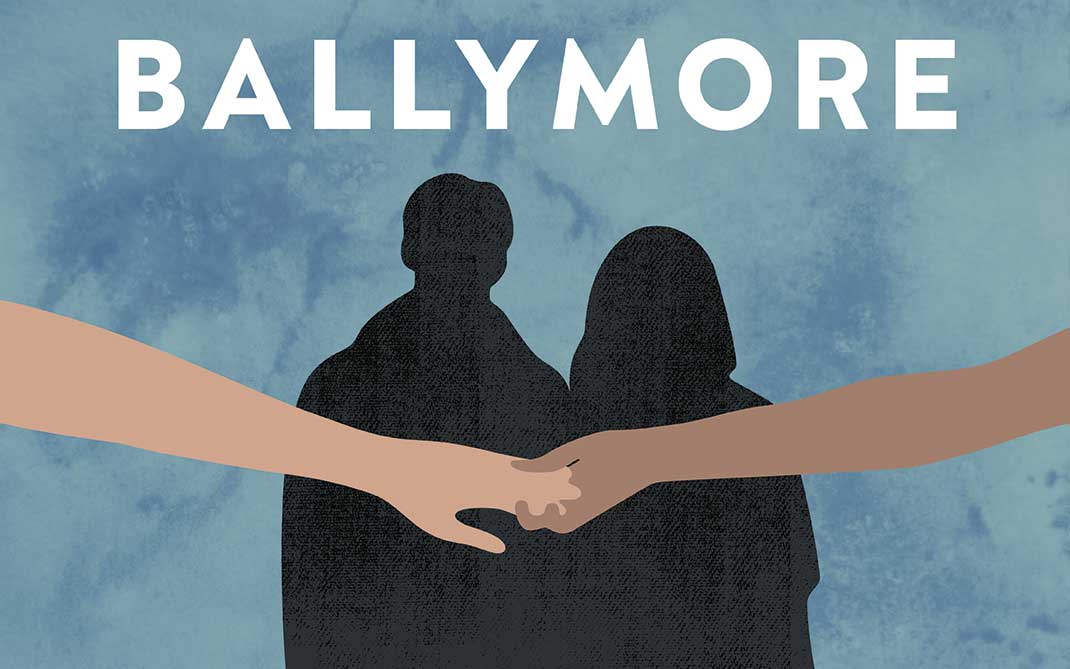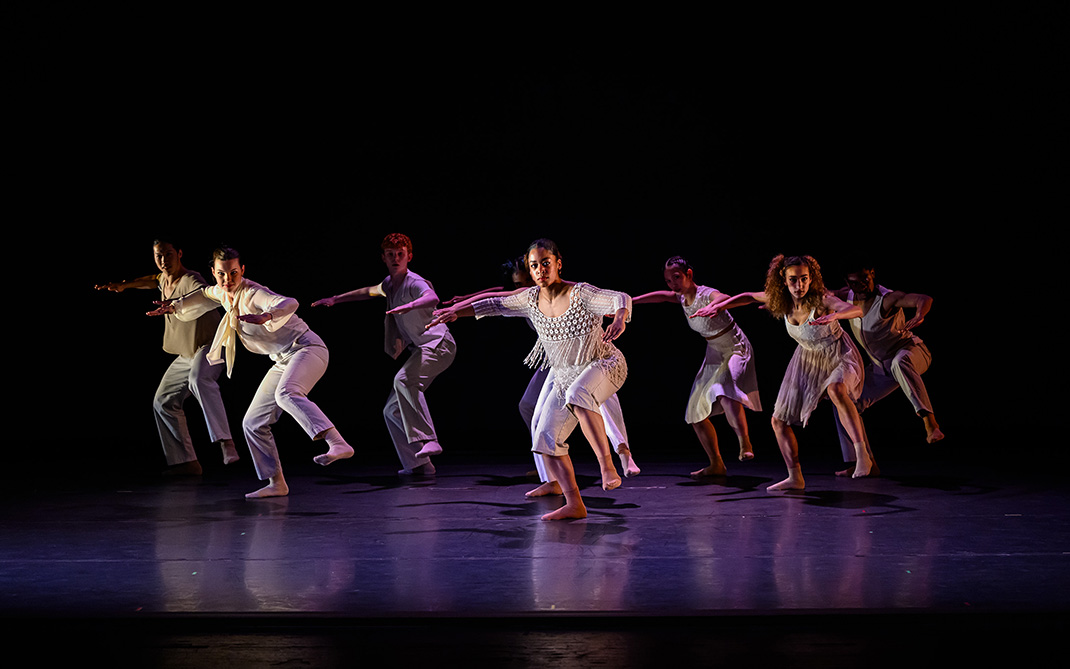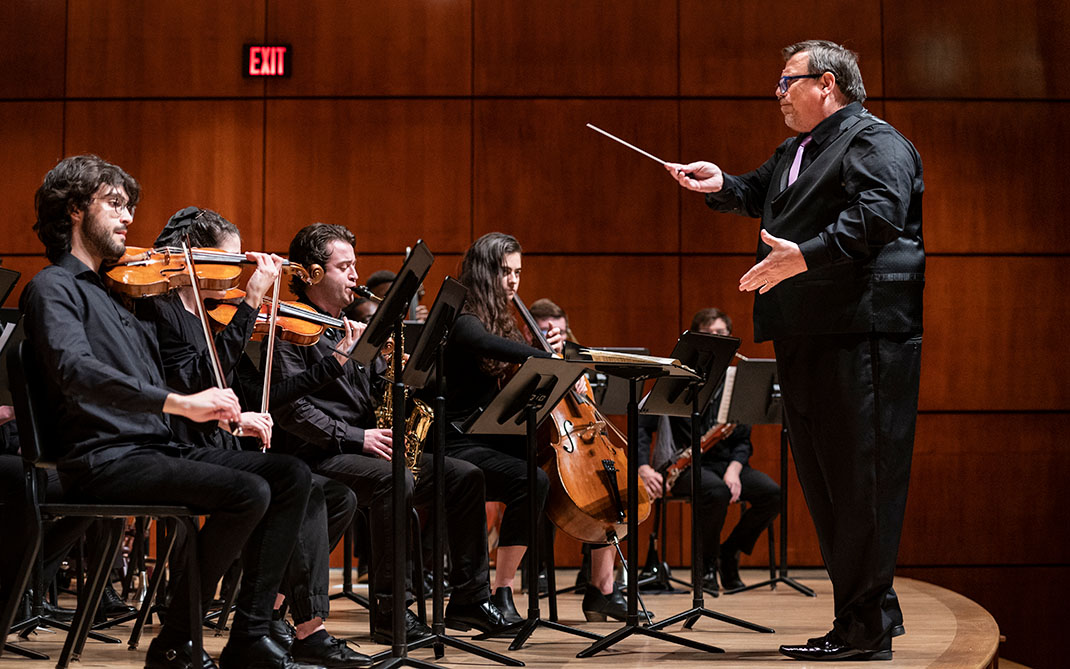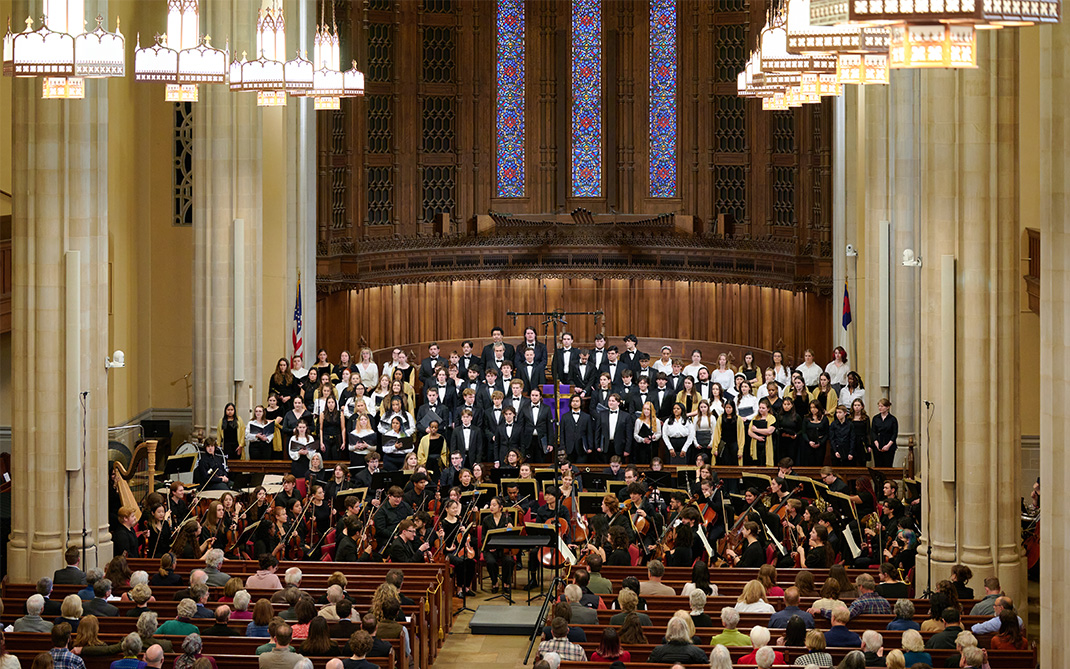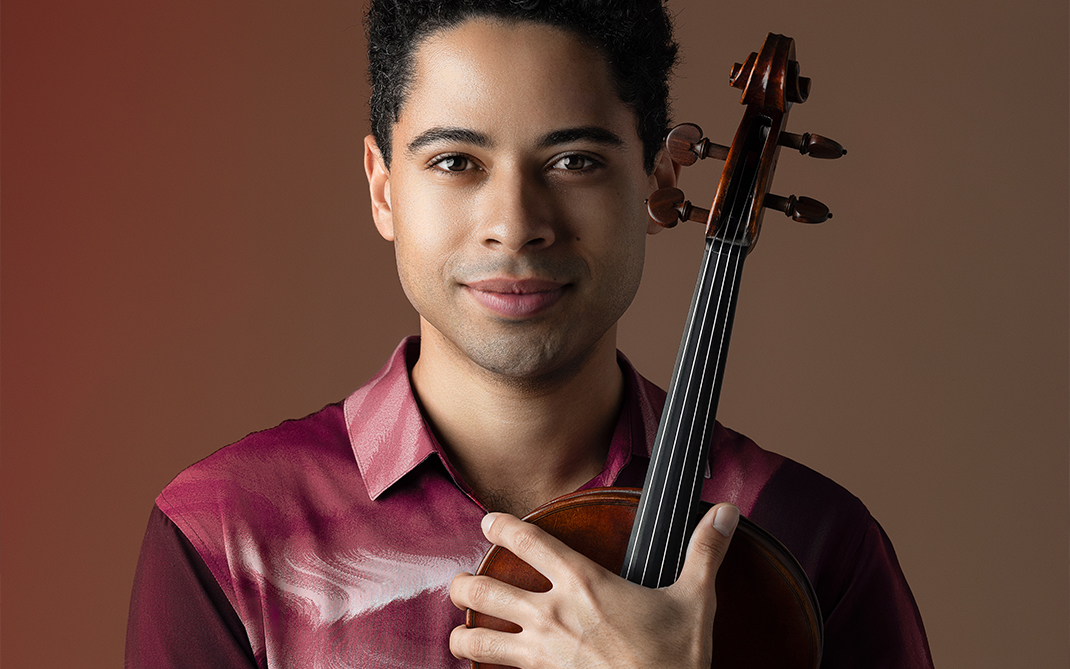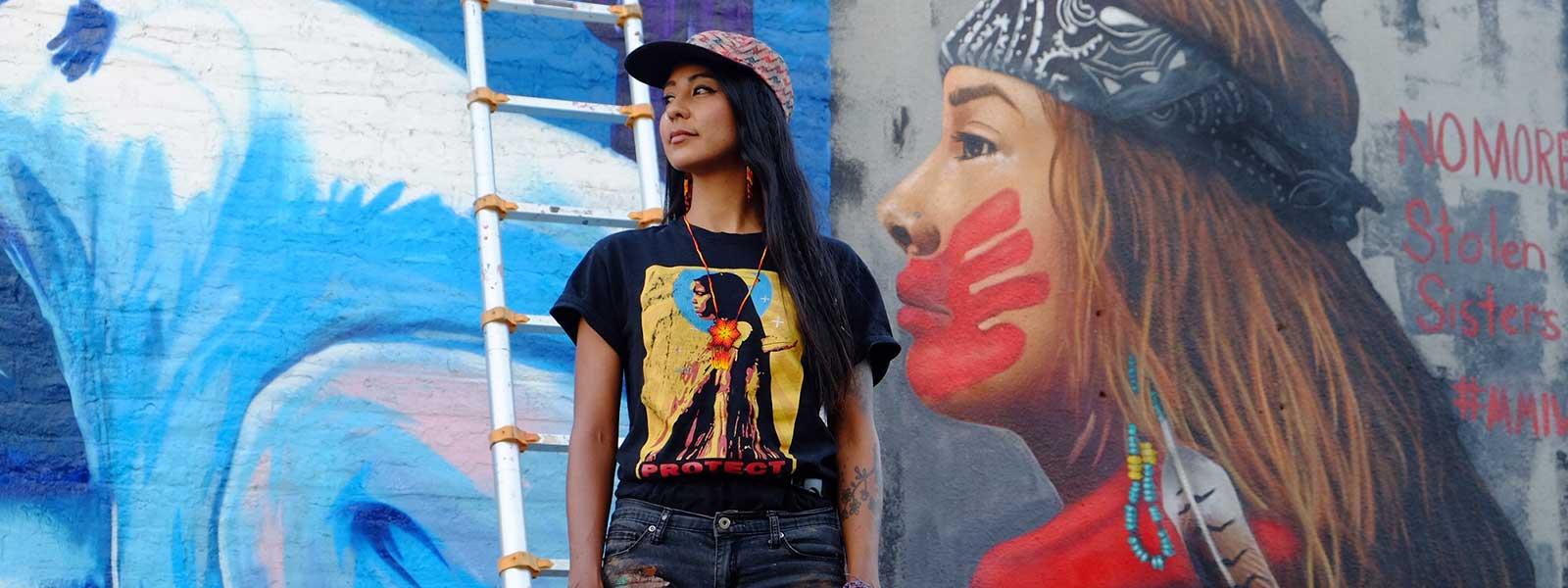Artist As Leader: Lucinda Hinojos
In just three years, muralist Lucinda Hinojos has made a mark on her hometown of Phoenix, AZ in more ways than one. Her bold large-scale paintings grace several structures in Phoenix and call viewers' attention to sociopolitical issues dear to Lucinda's heart, including the overlooked Indigenous women and children who go missing each year and the plight of so-called Dreamers, whose legal status in this country is becoming increasingly precarious.
As an activist and advocate, she has worked closely with several social-service and political organizations, including Promise Arizona and ACLU of Arizona. In 2018 she co-founded Colors of La Comunidad, a collective of artists and activists that advocates change through art by empowering, motivating and inspiring communities.
In this interview with Rob Kramer, Lucinda describes how she has married the leadership skills she learned in the corporate world to her innate passion for her art in order to become a singular force for change in her community.
Choose a question below to begin exploring the interview:
- Tell us a little how about you got to where you are. Because it happened fast, right? You've really been a working artist for three years.
- Where were the sparks that made you see that you were drawn to art and community impact?
- You're the opposite of many of the artists we talk to, in that you already had some tangible business and leadership skills and then you found the art. It sounds like the motivation and the catalyst just allowed both of those things to take off together. Is that accurate?
- So do you truly consider yourself a leader at this point?
- What I hear in that is it's almost like you've been anointed to be a good steward of impacting your community, of putting these messages out, of harnessing your ancestry with your art and with community impact. It's like all these forces seem to be coming together around you. Is that an experience you're having?
- It sounds like you have a combination of both direct and indirect leadership. Would you agree? How do you see yourself doing both?
- As you mentioned earlier, we are in the midst of not only the COVID pandemic but also a racial-justice pandemic and a polarized political pandemic. Do you have any plans for how you'd like to impact your community during these difficult times?
- Was there any advice you wish you had received when you were just starting to get into art and art leadership?
- What do you think needs to change or evolve to encourage more artists to step up and lead?
- Epilogue
Rob: Tell us a little how about you got to where you are. Because it happened fast, right? You've really been a working artist for three years.
Lucinda: Yes, it happened really fast! Up until recently, I wasn't even thinking much about how I lead or what informs me to lead. It was more of an instinct, I say. It's survival mode.
I'm a single mother of three, and my background is … I didn't have much of an influence. My grandfather was just a hard worker. He was a civil engineer. He owned a soccer franchise, and he was a professor at ASU and took on so many roles. I really looked up to him. Other than that, I mean, my background ... I played sports. I didn't really have an artistic background. But my grandfather was an early mentor influence on me.
Then at the age of 18, I became pregnant with my oldest son Dominic. At that time, I had to leave home. This was a very traumatic period for me. At the time, I had a soccer scholarship. My parents wanted me to go to college, which I did — after I had my son, I went back for three years — but at the time they didn't accept my situation, and so I decided to leave my home at 18.
This was the first time that I ever had to take a leadership role, making that big decision: "I'm leaving home." That scared me. I didn't know what the outcome was going to be. But those survival-mode instincts turned on, and it gave me courage. It gave me a lot of things that I've learned from that time. That's how it started.
I didn't get into the art community until about 2011. That's where it started for me, in 2011. Before that, I was with the kids' father for 12 years. I was working an office job, two jobs at a time. It wasn't until I left their father that I got into the art community.
I was new to the Phoenix community. Nobody had seen my face before, and so I had a lot of judgment and a lot of things that were being said. But I knew what I wanted to do, and I knew I wanted to get into art. I didn't know exactly what, but I knew it was something that had to do with the community and art. So that's where I started.
Rob: You're such a great example, I think, of what we'd call someone who's self-led or is demonstrating self-leadership. You had the courage to leave your relationship, and you had the courage to strive toward what seemed like a calling.
Lucinda: Yes.
Rob: Where were the sparks that made you see that you were drawn to art and community impact?
Lucinda: I'll just tell you a quick story. I went to community college for three years, Glendale Community College, after I had my two sons, but I don't feel that's where I picked up the leadership. Even though I took art classes, I didn't feel like I picked up the leadership skills. For me, it happened in 2004 when I worked for Elizabeth Harper, my manager at the time. This was an office space. At that time, she pulled me into a meeting, and she sat me down.
Before this, I was very quiet, very shy. Even though I took that role, leaving at 18, I still was shy and very reserved. But this manager in 2004 — I'll never forget this — she pulled me into her office, and she said, "I'm going to break you out of your shell!" I looked at her like, "What? Why? Why me?" I was sitting there like ... I was so confused. Out of everybody on her team, she chose me! I really didn't believe her. But she mentored me, and she walked me through it, and she helped me see myself for a bigger purpose. I'd never had that before.
From that point on, I managed a team of 25 for a few years. Then from that point I went to work for a corporate American company for 14 years before I left to do art full-time. That's how I started.
That's how I moved so fast, because in 2011, I was going through something, and I wanted to get it tapped into art. That's when I was questioning myself: "What do I want to do? Is it art? Community? How do I do both?"
There was a graffiti art show in Phoenix, and when I went, all kinds of people showed up. I was like, 'Well, this is something that I want to do.' ... I felt that I had enough knowledge to take on a project. Even if I didn't have an art background, I felt that I could do it.
There was a graffiti art show in Phoenix, and when I went, all kinds of people showed up. I was like, "Well, this is something that I want to do." It triggered something, and I was like, "Well, I have the business mindset." I felt that I had enough knowledge to take on a project. Even if I didn't have an art background, I felt that I could do it.
What I do is I like to break things down. I look at all the sources and people involved that I have at the right-now moment. That's how I started working. "OK, I want to do an art show in Phoenix. I don't know anybody in the community, but what do I have right now? What sources do I have to make this happen?"
I had another mentor, a business partner. His name is Joe Maldonado. He's a DJ. I told him what I wanted to do was throw an art show, an underground graffiti art show. He said, "Have you ever done one before?" I said, "No." [She laughs.] "Do you know any artists?" "No." And so I was like, "Oh, man, I think this is going to be ... ." And he goes, "Do you know where you want to have it?" I said, "Not really." I was like, "Oh, maybe I should think about this a little bit more."
But I remember, on Christmas Eve, I think, it was 2011, I got a phone call from him. He's like, "Hey, you know what? I'm going to help you." I go, "For real?" He's like, "Get out of your chair. We're going to do this. I'm going to help you do it." I said, "Yes! Thank you!"
I threw my first art show in 2012. I had 15 artists. We hadn't even opened the doors yet, and we had a line wrapped around the building. Three hundred people showed up. My sponsors were Patrón and Macayo's restaurant in Tempe, AZ. They were just floored, like, "What?" I remember having a meeting with the reps from Patrón and Sharisse, the business owner from Macayo's. They just looked at me, like, "How did you pull that off? How did you put all this together?" My business partner, Jo, looked at me. She's like, "She did it." And, I was like, "Oh, my God, I did do this!"
I didn't spend any money doing it either. It was a very minimal amount of money that I used to put this together. Again, I used resources that I had. I learned that way of working from my past jobs. And that's how I got my foot in the door to the Phoenix art community.
Rob: That's great. You're the opposite of many of the artists we talk to, in that you already had some tangible business and leadership skills and then you found the art. It sounds like the motivation and the catalyst just allowed both of those things to take off together. Is that accurate?
Lucinda: Yes. And you know who noticed this was Liz Lerman, a dance instructor at ASU, and another professor. They noticed right away. We talked about how that piece is actually missing from art school for students who graduate with their MFA or BFA: that leadership development that you can pick up from the business side of things. That's something that's missing. They actually reached out for me to be a mentor for their students, but at the time I wasn't ready to say yes. This was two years ago. They asked me to do this. There are times where I think about it, like, "Maybe I should reach back out and help them out." But I just ... no, not yet.
Rob: So do you truly consider yourself a leader at this point?
Lucinda: I still struggle and cringe with that because there've been incidents where something has happened in these current uprisings — we're moving so fast — where it is tough. There are times when I just stand and I'm like, "Why me? I'm so tiny and little." There are times when I'm like, "It's a lot of responsibility."
Maybe two years ago, the Mexican consulate here in Arizona reached out and sent me a letter describing me as a distinguished leader in Phoenix and invited me to a meeting with other leaders in Phoenix. I was like, "Am I reading this right? Why are they calling me a distinguished leader?" Sometimes I don't even ... I'm a huge goofball too, and I'm like, "But I'm such a dork!"
I'm starting to understand and realize that people are starting to follow me and they're very inspired by what I'm doing. Sometimes I'm not looking left, I'm not looking right; I'm just looking forward in this tunnel because I understand that this is a bigger purpose than myself.
But when I showed up and I entered that room — there were other distinguished leaders from the Phoenix community — after sitting there and speaking, I understood why I was there. I'm starting to understand and realize that people are starting to follow me and they're very inspired by what I'm doing. Sometimes I'm not looking left, I'm not looking right; I'm just looking forward in this tunnel because I understand that this is a bigger purpose than myself.
There are a couple of things that tie into my leadership skills: my survival that I learned at a young age, my leadership coming from a corporate American company for 14 years and then my spirituality. I didn't learn about spirituality until 2015 when I spiritually awakened and reconnected with my Indigenous roots and learned how to work with my guides and my ancestors. That strength and that courage to have and take with me and carry that on to this moment … now I understand it, and now I respect it. And I'm accepting it.
I'm not going to lie. The other day I wanted to cry because there was a situation that I had to handle that was overbearing for me. I said, "I don't want this right now. I just want to paint, and I want to create." And my friend, my peer, Michelle from Art Collective, was like, "Well, I'm sorry, lady, but this purpose is bigger than yourself and you were chosen. You're going to have to carry that leadership for a little bit longer." And I'm like, "No!" [She laughs.]
Rob: What I hear in that is it's almost like you've been anointed to be a good steward of impacting your community, of putting these messages out, of harnessing your ancestry with your art and with community impact. It's like all these forces seem to be coming together around you. Is that an experience you're having?
Lucinda: Yes, exactly. My artist peer asks me, "How are you doing it? How is it that we've been doing this for 25 years, but you've been doing this for a few years and here you come jumping right over us?" I looked at my peer who said this to me, and I had to reflect on what was being said to me.
But also I want to say that I see myself as an ally to our Creator, to Great Spirit. I've accepted this role. When I paint, I call in my ancestors. I put in a lot of love and positive energy — I call it medicine paint —into the work that I'm doing. When I paint a mural and it goes viral, it's because of the energy that I put into it.
Some people just don't understand that. I'm not here just to paint. I'm here to make change, to heal people, to move people, to inspire, and I do it every single time.
Some people just don't understand that. I'm not here just to paint. I'm here to make change, to heal people, to move people, to inspire, and I do it every single time. I watch my other peers paint mural after mural after mural, but for me, I invest a lot of my energy into each piece of artwork that I do. So that's why it takes me weeks, months, to paint the next mural, because of how I go about it and the purpose behind it.
Rob: When we talk about leadership, we often talk about two kinds, direct and indirect. Direct leadership is where someone's actions have a direct line to the people they're impacting and the results the leader is seeing and getting. Indirect leadership is where someone puts things out in the world that have an impact and create change. It sounds like you have a combination of both direct and indirect. Would you agree? How do you see yourself doing both?
Lucinda: A good example is that I'm also a founder of Colors of La Comunidad. It's a mural project that collaborates with other social-justice nonprofit organizations. This is a good example of artists in leadership. What I did when we first did our mural project in 2018 is I collaborated with Petra Falcon at Promise Arizona. She was someone who actually walked with Cesar Chavez during the Chicano movement. Colors of La Comunidad was a mural project, and I actually did this project almost by myself.
I had to organize the project and also paint the mural. It was a very, very hard balance because I was all over the place. I was doing things all by myself. I was still working full-time at Bank of America, had my three kids, was organizing this mural project in dedication to our DACA Dreamers and also painting the mural. That was a very hard balance, and I actually burned out and fainted. [She laughs.]
Rob: You literally fainted?
Lucinda: There was a day that I fainted. I fainted, yes, I had a workshop that I was doing with another project in Yuma, and I fainted.
Rob: Wow.
Lucinda: So it was a lesson learned that, "Hello? You do not have to do this alone!" Because I became a gatekeeper. Because I'd been doing so much by myself. Early on I was so used to being told no or that it would cost something that it was hard for me to reach out and ask for help. I still struggle with that to this day.
But I did put it out there that I would like like-minded individuals that could help me. And then I met my now-project-manager, Diana Calderon, who is now helping me with Colors of La Comunidad. In 2019 she jumped onboard. Then I was able to switch from leader to artist and just be an artist. It was just having that trust and breaking those barriers down of "You don't have to do this alone!" "Why?" I'm like, "I don't know why!"
Rob: What are you noticing by allowing yourself to trust somebody else?
Lucinda: It's that great things can happen with more than just one person. More can happen, and now I'm seeing that, because I've worked with people but I haven't had people work inside my project
Then recently, because of this uprising that's happening regarding the Black Lives Matter movement, we have now created an art collective here in Phoenix, and it's of Brown, Black and Indigenous artists. ... You're having to learn how to work with others that you don't know and that you haven't known very well, but you have to trust them and break down those little bits of barriers.
Then recently, because of this uprising that's happening regarding the Black Lives Matter movement, we have now created an art collective here in Phoenix, and it's of Brown, Black and Indigenous artists. And this is again working with more people. I'm learning how to be an artist, and I'm stepping back and letting others lead, because we're moving so fast. We're putting out social-justice art, and when you're doing movement art, you're moving really fast. You're having to learn how to work with others that you don't know and that you haven't known very well, but you have to trust them and break down those little bits of barriers. I always tell myself, "Stop being gatekeeper!"
Rob: As you mentioned earlier, we are in the midst of not only the COVID pandemic but also a racial-justice pandemic and a polarized political pandemic. Do you have any plans for how you'd like to impact your community during these difficult times?
Lucinda: When COVID first happened, I was lost. I didn't know what direction to go in at the moment. I actually had to take two weeks off and do nothing. This was when I learned how to slow down and to be present with my family, my kids and myself. Because before then I was moving so fast. COVID gave me that time to slow down and to reflect and figure out how to move forward. As that was happening, I was getting more into my artistic training, I would say, my skills.
Then all of a sudden the uprising happened. I'm like, "Oh, my God." And then I got phone calls, like, "We need to move fast. We need to do this, this, this!" And I'm like, "What? But we're in COVID times! How do we do this?"
So what do you do? It's like a panic survival mode. You use the resources that you have and what you can and cannot do, and you move. And that's what we did. You put the mask on, and you start moving. You go do things at night on your own or with another person. Right now, we're moving so fast. We're trying to figure it out as we go. Because of the uprising, we're moving so fast, and the type of artwork that we're doing is movement art, so we're figuring it out right now. It is a hard balance. It is stressful, and it's a lot.
But again I'm not in it alone this time. I'm working with others. All of us artists, creatives in this art collective, we all have different skillsets.
We don't have a name yet because we do some stuff anonymously and we want to remain that way. But I'm learning all these different ways of working and maneuvering during COVID and this uprising the best way that we can and the safest way that we can.
Rob: It sounds like you're getting a lot of lessons and learning a lot because of the context, which makes me also wonder about when you first were starting as an artist. Was there any advice you wish you had received when you were just starting to get into art and art leadership?
Lucinda: Yeah, there is. I'm going to go back to saying that I wish someone had told me early on that you don't have to do this alone. You can ask for help.
Also I was listening to another podcast a few months back. It was Simon Sinek on the "TED Radio Hour" on NPR. I wrote down what he said. For me, it just makes sense to me. I'm just going to read what he said. They're asking, "What does a leader have to inspire others?" Or, "What abilities do they have?" And he said, "They have deep and undying beliefs in something bigger than themselves. The best leaders are the best followers, because they don't see themselves as a thing to be followed. They actually see themselves as following a cause bigger than themselves. We see ourselves in service to something else." That was a lightbulb for me. I was like, "Oh, now I get it. Now I get it!" I wish I'd known that a little bit sooner.
Rob: What do you think needs to change or evolve to encourage more artists to step up and lead?
I think people need to start seeing and understanding how essential artists are to humanity. I see myself as a healer. My tools are my paintbrush and my spray can. We can create change with our gifts.
Lucinda: I think people need to start seeing and understanding how essential artists are to humanity. I see myself as a healer. My tools are my paintbrush and my spray can. We can create change with our gifts. We can move and inspire people in mass numbers. I feel that we are undervalued greatly, and if we can change that outlook on us, then many more would have the confidence to step forward.
Epilogue
You never really know where life may take you. Once a corporate office worker and now a renowned artist and activist, Lucinda Hinojos shows us the power of combining forward-leaning determination with honoring one's history. Lessons we can take from our interview with Lucinda include:
- Listen to mentors. At times in life you may be fortunate to cross paths with people who see more in you than you see in yourself and who offer to help you. You can also be proactive and seek out people from whom you can learn. Embrace both.
- Identify translatable skills. You may have experience you don't realize can help you as an artist leader. Survey your history and identify capabilities you can use now and in the future.
- Know your purpose. Combining passion with purpose is a potent combination. Take the time to clarify your "what" and your "why" to make a meaningful impact on the world.
- Collaborate. There is only so much you can accomplish alone. Artist-leaders can compound their abilities exponentially by working with others in trusting partnerships.
- Be resourceful. Opportunities can present themselves even in the bleakest of times. Be willing to seize the moment and be willing to be surprised by the unknown.
